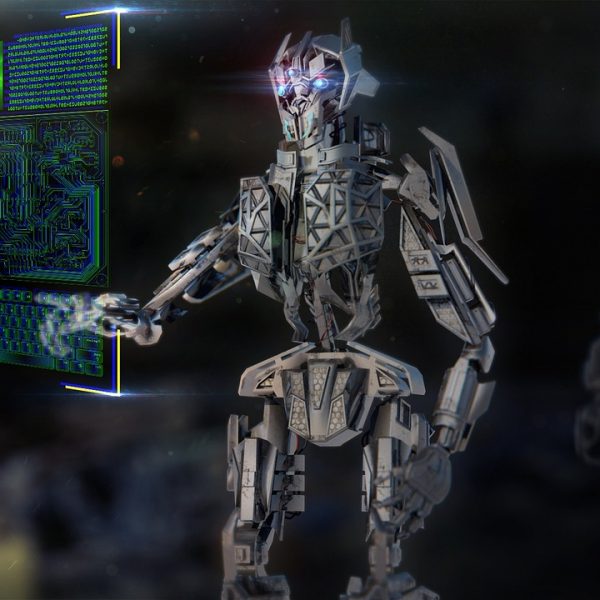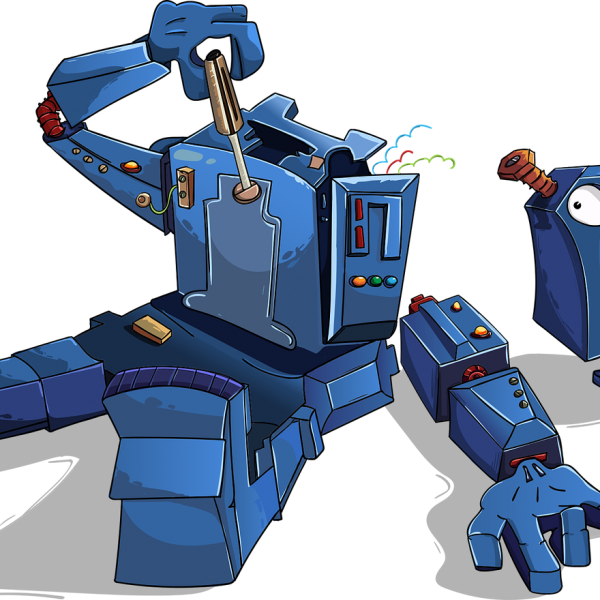Robots have come a long way in the past decade. From factory automation to social companion bots to self-driving cars, robots are becoming integral parts of our lives. As we enter 2022, what does the future hold for robotics technology and applications?
To find out, we asked six top experts in the field of robotics and automation to share their predictions. These industry-leading humans offered fascinating insights into where robots are headed next year and beyond. Read on for six robotics predictions that will shape 2022 and the years to come.
Prediction 1: More Collaborative Robots in Manufacturing
Our first prediction comes from Dr. Melonee Wise, CEO of Fetch Robotics, a leader in autonomous mobile robots. She predicts huge growth in collaborative robots, also known as “cobots”, in manufacturing environments:
“In 2022, we’ll see an influx of collaborative robots that work alongside humans to make workers more efficient, which helps manufacturers deeply impacted by labor shortages in recent years. Unlike traditional industrial robots shut off from people in cages, these smart cobots can operate safely right next to human colleagues. They assist in repetitive and potentially dangerous tasks, allowing the human worker to focus on more complex responsibilities. The additional support from cobots also reduces fatigue. As more manufacturers adopt cobots, they will become critical components of agile, resilient operations.”
Prediction 2: Rise of E-Commerce Fulfillment Robots
Next, Dr. Tessa Lau, CTO of Dusty Robotics, which builds robots for logistics and supply chain automation, shares her thoughts on warehouse and fulfillment robots:
“We’ll see exponential growth in robots designed specifically for e-commerce order fulfillment. The astonishing rise of companies like Amazon has put huge pressure on warehouses to ship massive volumes of orders to customers quickly. Humans alone can’t keep up. Autonomous mobile robots can operate 24/7 at high speeds to move inventory and pallets, letting humans focus on more precise picking and packing. Robots also bring improved efficiency, throughput, and lower mistakes compared to manual fulfillment. As the labor crunch continues to wreak havoc on supply chains, smart robotics will be the solution that keeps the e-commerce engine running.”
Prediction 3: More Autonomy in Self-Driving Cars
According to Dr. Oliver Cameron, CEO and co-founder of Voyage Auto, a self-driving car startup, increasing autonomy will be the next big leap for consumer driverless vehicles:
“In 2022, we’ll see the first examples of truly driverless robotaxis deployed in limited areas and specific environments. To date, autonomous test vehicles still have safety drivers behind the wheel. While the cars drive themselves most of the time, the human driver handles unexpected situations. But the technology is reaching a point where cars will no longer need that human backup and can safely control all aspects of driving. Initial deployments will start small in 2022, but it’s a huge milestone that shows the rapid pace of advancement towards fully autonomous consumer vehicles.”
Prediction 4: More Robots in Healthcare and Senior Care
Next, Ella Hermela, RN and Director of Robotics Nursing for Diligent Robotics, shares her healthcare perspective:
“In healthcare, nurses and doctors are being pushed to their limits and face extreme burnout. Robots won’t replace them, but can help reduce their burden dramatically. In 2022, we’ll see more medical robots that work as team members to take on time-consuming daily tasks, letting clinicians focus on patients and advanced care. Robots like Moxi have already proven they can autonomously deliver medications, samples, lab work and linens around hospitals. This frees up nurses and aids to provide more hands-on patient care. For senior care facilities, social companion robots like Cutii will become more common to engage with elderly patients and improve their emotional wellbeing.”
Prediction 5: More Use of Robotics in Construction
To understand the future of construction robotics, we asked Dr. Thomas Galluppi, CEO of Built Robotics, which develops autonomous equipment for construction sites:
“One of the most hazardous industries right now is construction, where injuries and fatalities are common. In 2022, robots will become increasingly mainstream to eliminate these dangers and absorb other risks instead of workers. For example, remote controlled crawler robots can work underground and in confined spaces to avoid putting humans in harm’s way. Exoskeletons can also enhance human strength and endurance. Robots will take on more repetitive, unsafe tasks on job sites, allowing the construction industry to improve productivity and focus on higher-level thinking and complex problem-solving.”
Prediction 6: Growth of Service Robots
Finally, Sarjoun Skaff, CTO and Co-founder of Bossa Nova Robotics, which builds service robots for retailers, sees expanded roles for robots in service industries:
“Retail, hospitality, facilities maintenance, and other service sectors will eagerly adopt more automation. Service robots excel at repetitive, tedious tasks like cleaning floors, moving goods, monitoring stock, checking shelves, delivering food orders, disinfecting, and more. Not only do they perform these duties efficiently around the clock without breaks, but they free up human workers to offer better hospitality and customer service. Shopping at automated stores and restaurants will become more commonplace and even preferred by consumers looking for faster transactions and less waiting. The leap in quality of service made possible by automation will drive rapid adoption across service businesses.”
Conclusion: The Future is Automated
It’s clear that robotics technology has enormous promise to transform nearly every industry. From manufacturing to medicine to transportation and beyond, robots are poised to take on increased responsibilities alongside humans in the coming years.
According to these experts, 2022 will represent a major inflection point as robots become indispensable across most sectors. Driven by surging demand for automation, shortages of human labor, and the maturation of core technologies like computer vision and AI, we can expect robots to deliver huge efficiency gains, cost savings, safety improvements, and higher levels of service in the very near future.
While humans will always be needed to handle complex cognitive functions that exceed robot abilities, the potential to offload physical, repetitive, dangerous, and mundane work onto machines is incredibly compelling. As one of the top trends shaping the future, robotics will impact our lives more each day. The experts agree – the automation revolution is coming fast, and 2022 will be a year of incredible developments in real-world robot deployments. The future is automated.




